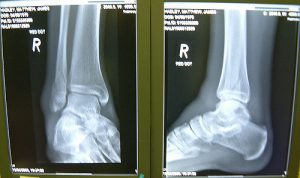
Every nine minutes, someone in a U.S. hospital dies due to a medical diagnosis that was wrong or delayed. This jarring fact is front and center on the home page of the Society to Improve Diagnosis in Medicine (SIDM). Reducing this number to zero is why some 400 physicians, nurses, patients, health institutions, nonprofits, and policymakers gathered in New Orleans this week for the 11th annual Diagnostic Error in Medicine Annual International Conference.
Roughly one in 10 patients with a serious disease is initially misdiagnosed. Diagnostic errors affect an estimated 12 million Americans each year and likely cause more harm to patients than all other medical errors combined, according to SIDM. Such errors also significantly raise health costs through unnecessary tests, malpractice claims and costs of treating patients who were sicker than diagnosed or didn’t have the diagnosed condition. A recent article in The Health Care Blog estimates that inaccurate diagnoses waste upwards of $100 billion annually in the U.S.
The diagnostic process is a complex, collaborative activity that involves clinical reasoning and information gathering to determine a patient’s health problem. “Diagnostic errors — inaccurate or delayed diagnoses — persist throughout all settings of care and continue to harm an unacceptable number of patients. It is likely that most people will experience at least one diagnostic error in their lifetime, sometimes with devastating consequences,” according to a 2015 report from the Institute of Medicine. Diagnostic errors cause tens of thousands of unnecessary deaths each year and likely as many people suffer permanent disability, according to an analysis published in the journal BMJ Quality & Safety.
“Improving the diagnostic process is not only possible, but also represents a moral, professional, and public health imperative,” that report’s authors concluded.
How can physicians improve the process? It starts with time, said Kelley Skeff, M.D., Ph.D., professor of medicine at the Stanford University School of Medicine. In his keynote, Skeff said one way to reduce error was improving the basics — taking the time to make documentation of patient histories more meaningful, making the effort to strengthen the physician-patient relationship and remembering to reflect, listen, and learn.
“There are many places we can make mistakes that affect the patient,” Skeff told attendees. “We have to be circumspect in our thoughts as we look at everything. We can’t just be patient-centered or family-centered or physician- or system-centered. We have to be centered for everybody.”
A strong patient-physician relationship is particularly key in reducing error, he said. Patients must trust that they can share their entire histories and be listened to without worrying that their physician will be offended or put off by details.
Physicians also must be sure to document the history of the history, Skeff said. That means listening and probing beyond the present circumstances. “The chronology of the present illness is not the same as the history, and the most recent events don’t tell the whole story.”
The medical profession faces plenty of challenges in making this approach a reality, starting with the way residents are taught to take histories. There’s a push to do everything in health care faster, and pressure to do more. But the opposite approach is what’s needed to reduce errors, Skeff said, such as taking time to figure out what potential connections may exist, such as those between medication side effects and seemingly disparate symptoms.
Going too fast without time for reflection can lead to physician burnout, another cause of diagnostic errors. “We’re told to take care of patients at all costs, even without the time to do it well,” Skeff noted.
Just as little details add much to a journalist’s narrative, details can contribute to a crucial breakthrough in a diagnosis, Skeff told me after the keynote. If doctors don’t have the time to listen — or know how to listen because they’re not taught — conditions can go undiagnosed or misdiagnosed.
Doctors are eager to collaborate with patients, many of whom are more knowledgeable now thanks to the Internet. It goes back to taking the time to build that patient-physician relationship, or as Skeff prefers to call it, a partnership. “I think there’s a science to the communication that can obviate the need for adversarial relationship,” he said.
Time is only one of several issues related to diagnostic error. Money is another. “Money and time get intertwined in the business world. Doctors have become promoters of widgets, and this doesn’t work,” Skeff said. Medicine has become more of a business than an art or science, and Skeff says physicians have joined in because they’re responsive to reward systems, just like anyone else. “And before we knew it, something got lost.”
Physician have to recognize that they are moving faster than is ideal for them to consider what’s happening to their patients, Skeff said later after his talk. He believes the soul of medicine is under attack “when we hunt for people to recruit to this field on the basis of their humanism and their brilliance, and then we tell them to use neither. And we wonder why they’re unhappy.”
Here are some resources for future stories on the topic:
- The Society to Improve Diagnosis in Medicine offers numerous resources to help your reporting:
- Patient stories
- This page of curated resources covers cancer, Lyme disease, stroke, lab tests and other situations where getting and understanding the diagnosis is critical.
- This report looks at patient roles as partners in reducing diagnostic error.
- The Agency for Healthcare Research and Quality (AHRQ) offers an entire patient safety section with articles, analysis and expert viewpoints.
- This Medscape article reports diagnostic error tops patient safety concerns.









